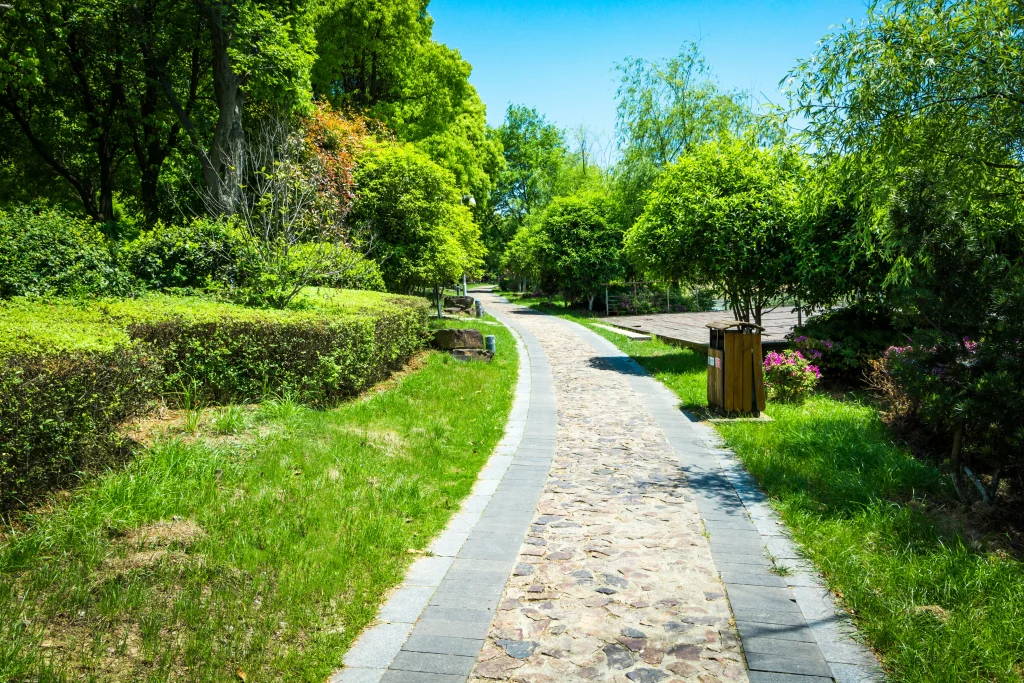You may know that rock landscapes handle Colorado’s semi-arid climate better than traditional grass lawns. Because they require no watering, resist erosion from sudden storms, and maintain their appearance through winters and summers is easy, sooner or later, you will slowly love them.
In this blog, we’ll explore 17+ creative backyard rock landscaping ideas that transform ordinary yards into stunning outdoor spaces.
Each concept addresses Denver’s specific environmental conditions while offering practical implementation guidance for homeowners ready to refresh their garden design.
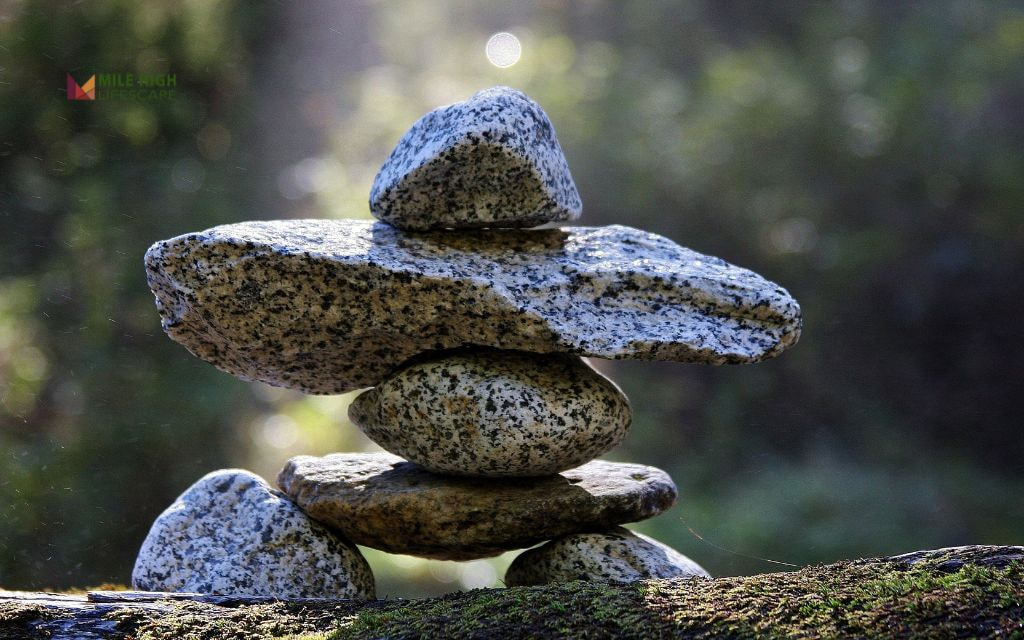
17+ Inspiring Backyard Rock Landscaping Ideas
#1: Dry Creek Bed for Drainage and Design
Transform drainage problems into design features with dry creek beds using smooth river rock. This backyard landscape idea with rocks guides stormwater naturally while creating visual interest. The flowing lines of arranged stones mimic natural waterways, adding movement to static spaces.

#2: Zen Gravel Garden with Minimalist Planting
Create a meditation corner using raked gravel patterns and carefully selected sculptural plants. This rock landscaping idea for backyard spaces emphasizes simplicity and tranquility. Small areas work perfectly for this design, requiring minimal maintenance and providing maximum visual impact.
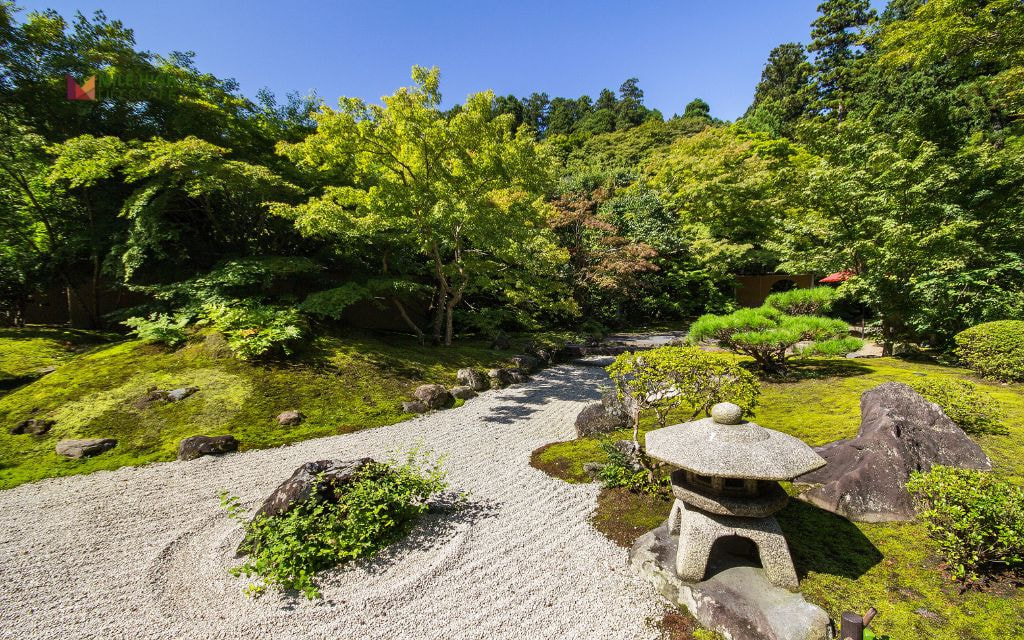
#3: Fire Pit Area with Crushed Gravel Base
Establish a level gathering zone using crushed gravel as the foundation for fire pit areas. Surround with boulders or flagstone seating to create natural conversation spaces. This backyard idea with rocks extends outdoor living seasons and provides safe, stable surfaces for entertaining.

#4: Flagstone and Gravel Patio Combo
Combine natural stone seating areas with pea gravel between for texture and water permeability. This landscaping idea for a backyard with rocks creates defined spaces while allowing proper drainage. The contrast between smooth stone and textured gravel adds visual depth to flat surfaces.
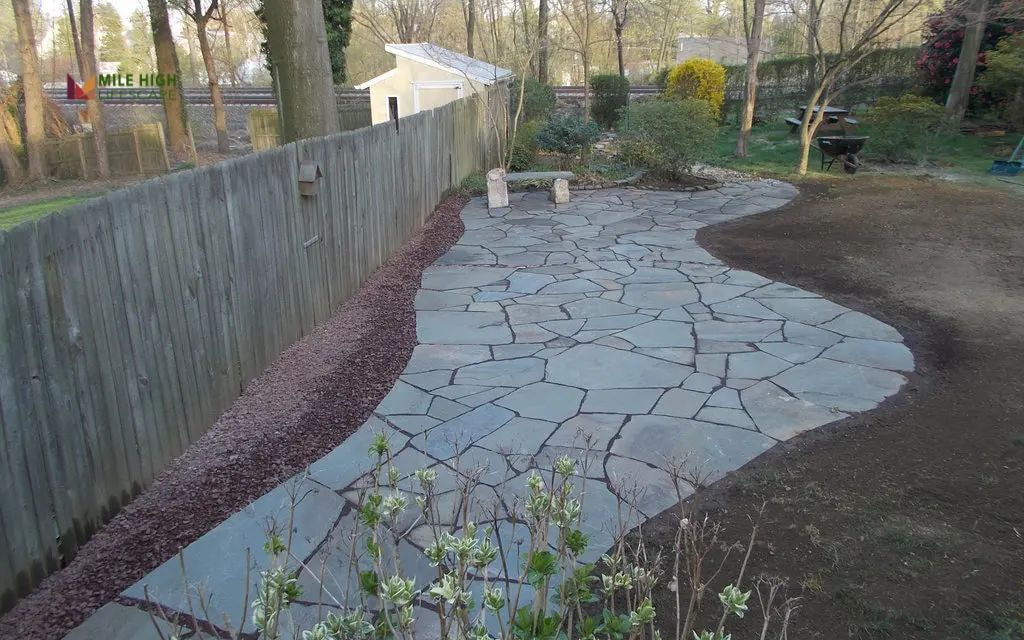
#5: Boulder Groupings as Natural Art Features
Cluster large stones as focal points, particularly effective in sloped yards where they create natural terracing. These backyard rock landscape ideas work especially well with Colorado’s mountain aesthetic. Position boulders to frame views or create natural windbreaks.
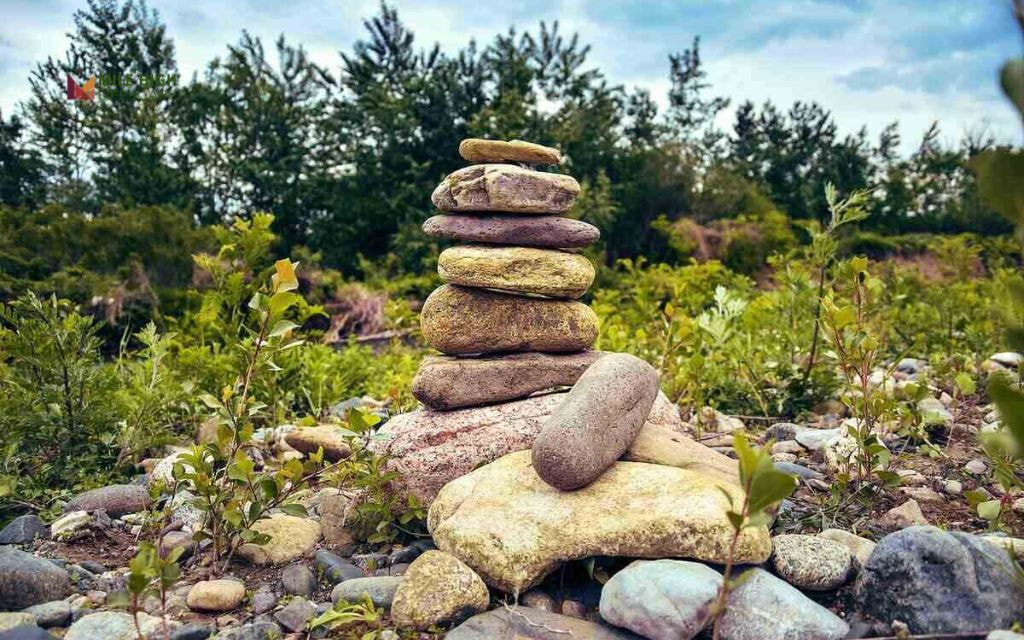
#6: Rock Edging Around Lawn or Garden Beds
Use flat rock or cobblestone to contain mulch or lawn edges with clean lines. This practical approach to rock landscaping ideas for backyard applications prevents soil erosion and creates clear boundaries between different landscape zones. The edging also reduces maintenance by controlling spreading plants. See more examples of our flower bed ideas with rock.

#7: Pathways with Stepping Stones and Gravel
Combine crushed granite or pea gravel with spaced flagstone stepping stones for pedestrian traffic. These pathways handle Denver’s freeze-thaw cycles better than concrete while providing stable walking surfaces. The combination allows for proper drainage during spring snowmelt.
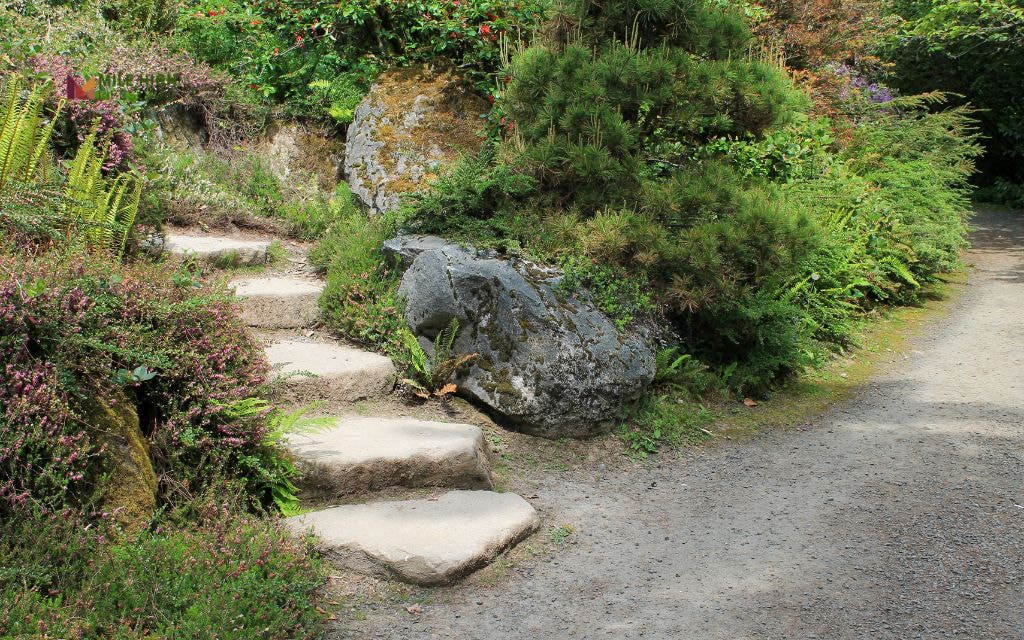
#8: Succulent Bed in Gravel or Lava Rock
Design sunny spots with gravel mulch supporting drought-tolerant succulents. Lava rock provides excellent drainage and adds unique color variations to garden beds. This backyard rock landscaping idea maximizes water efficiency while creating striking textural contrasts.
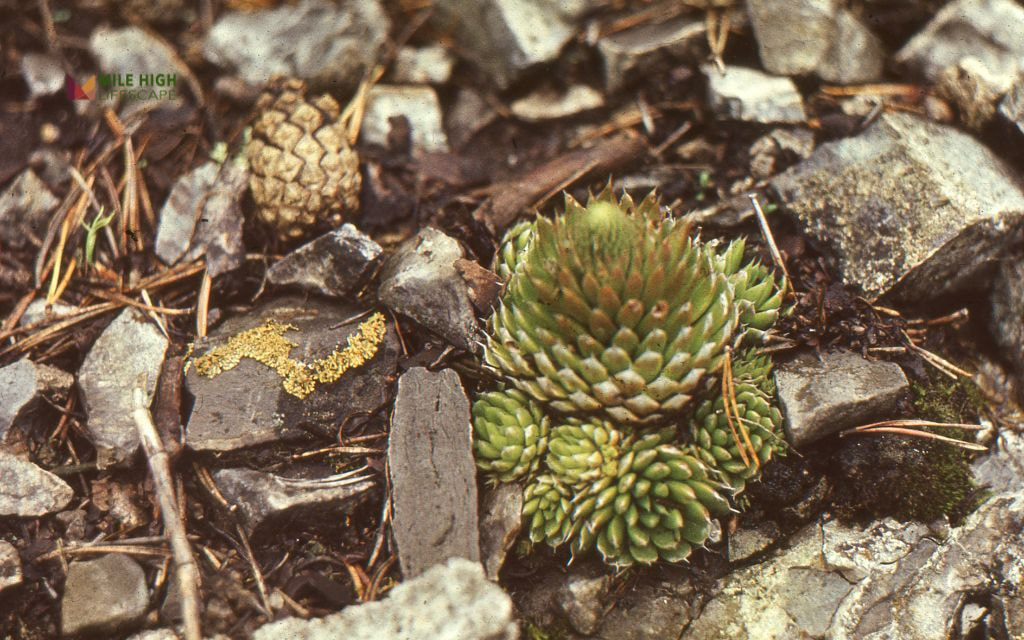
#9: Kid-Friendly Gravel Play Zone
Install soft-edged pea gravel with large pavers for safe play areas. This family-focused approach to backyard landscape ideas with rocks provides sensory play opportunities. The rounded pea gravel reduces injury risks compared to angular stone options.
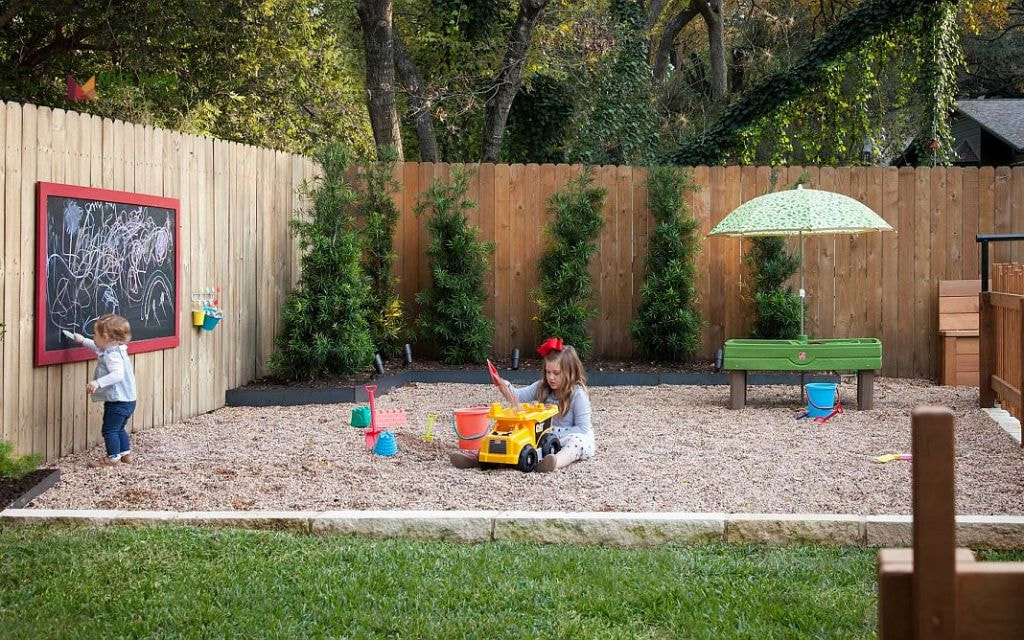
#10: Raised Rock Planter with Drought-Tolerant Plants
Construct elevated planters using stone retaining walls filled with native Colorado flowers. These structures provide excellent drainage while creating vertical interest in flat yards. The raised design protects plants from late frost while improving soil conditions.
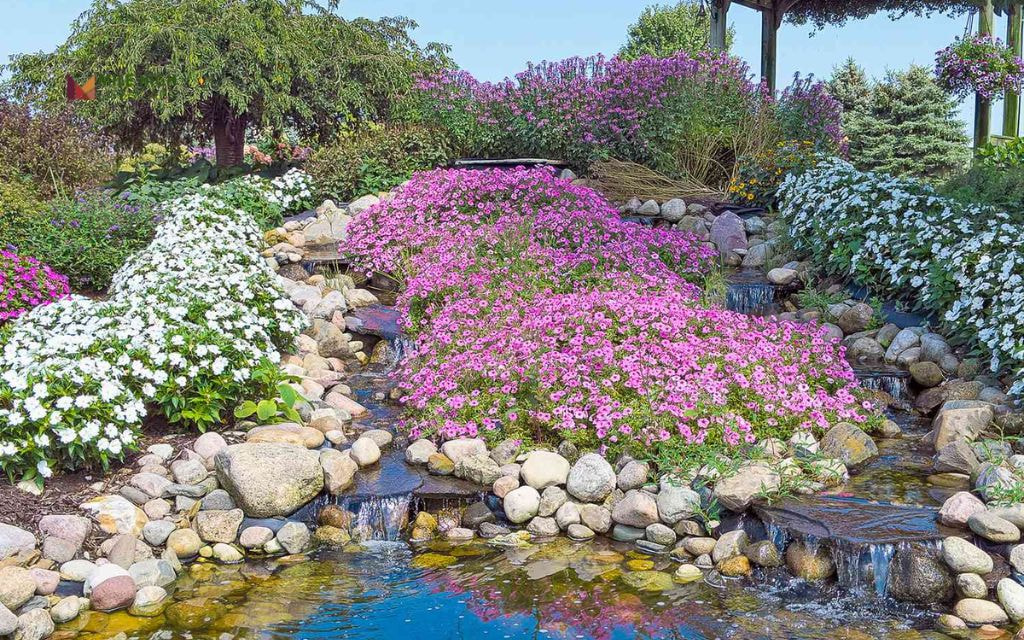
#11: Rock Garden Terraces for Sloped Backyards
Create tiered walls using natural stone or gabion baskets to manage slopes effectively. This landscaping idea for a backyard with rocks prevents erosion while creating planting opportunities at different levels. Terracing also makes steep areas more accessible for maintenance.
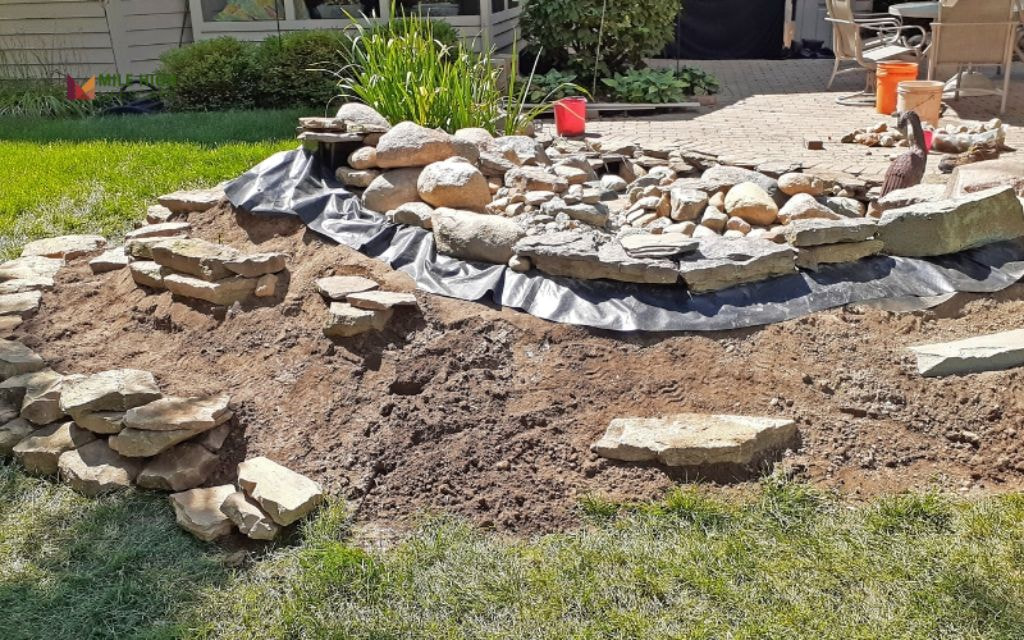
#12: Boulders and Evergreens
Mix structural rocks with dwarf pines or junipers for constant visual appeal. This combination provides structure through winter months when other plants go dormant. The evergreens soften hard rock edges while the stones anchor plant groupings.
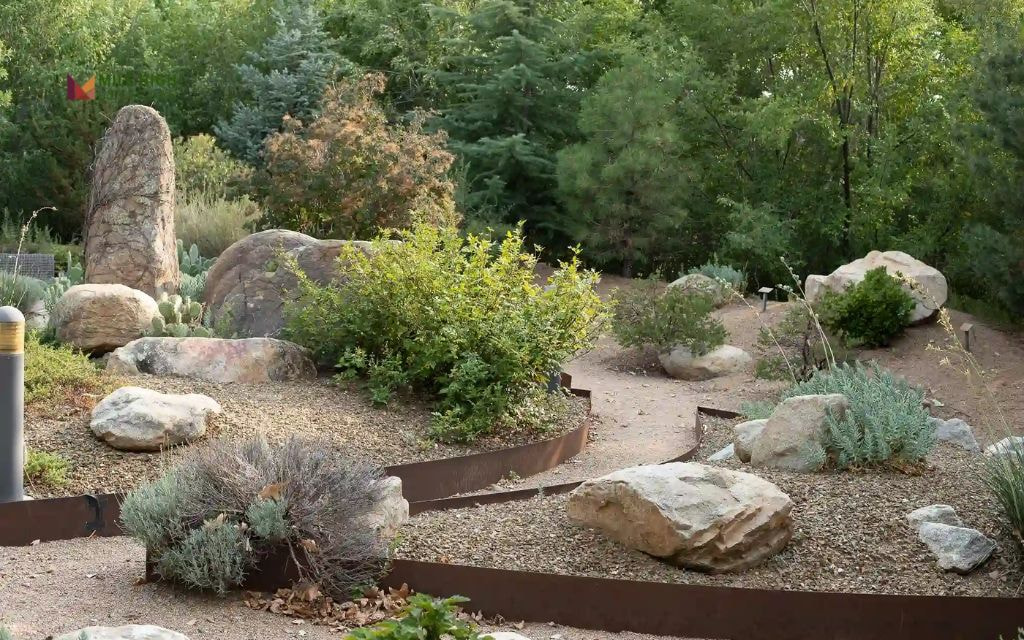
#13: Rock Labyrinth or Meditation Spiral
Design flat gravel areas with arranged stepping stones creating quiet contemplation zones. These backyard rock landscape ideas offer personal retreat spaces within larger landscapes. The geometric patterns both provide visual interest and functional purposes.
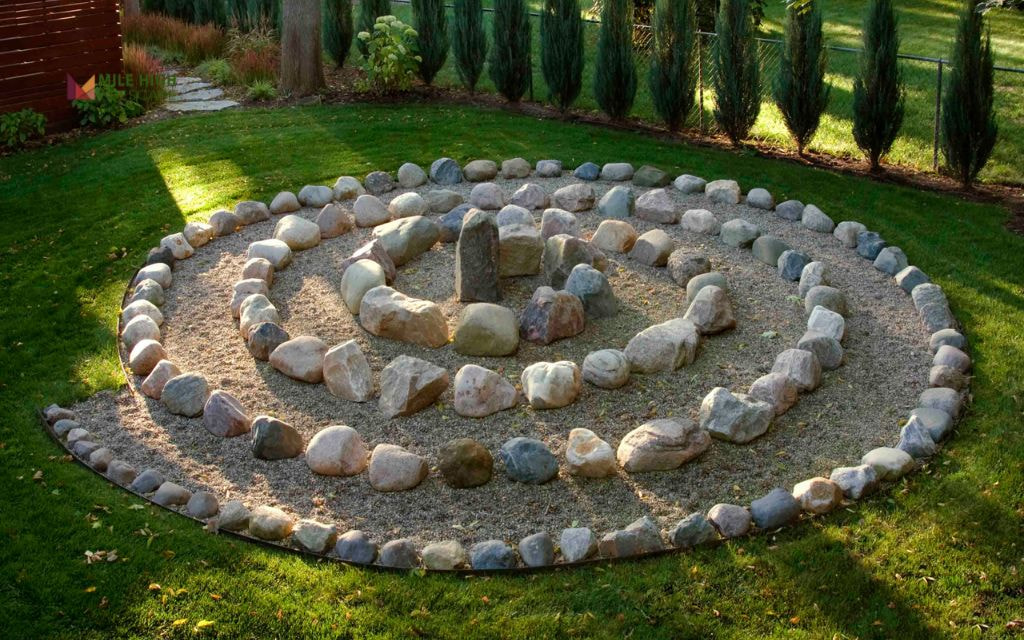
#14: Desert Vibe Design with Agave and Crushed Stone
Combine gravel mulch with sculptural desert plants for southwestern aesthetics. This rock idea works particularly well in Denver’s semi-arid climate. The design requires minimal water while providing striking architectural plant forms.
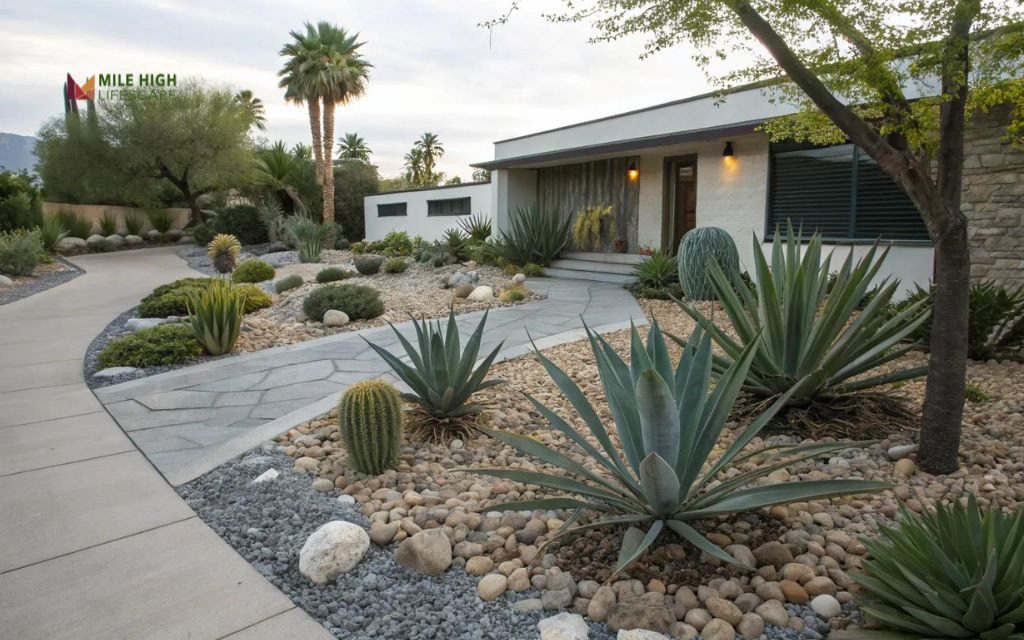
#15: Rustic Rock Bench Nook
Create boulder seating areas surrounded by gravel or mulch pathways. These natural seating solutions blend seamlessly with Colorado’s landscape character. Position benches to capture mountain views or create intimate gathering spots within larger gardens.

#16: Modern Grid Layout with Stones and Pavers
Design minimalist combinations of square pavers with uniform gravel fill between. This contemporary approach to backyard landscaping ideas with rocks creates clean geometric patterns. The grid system works well for smaller spaces where organization enhances visual impact.
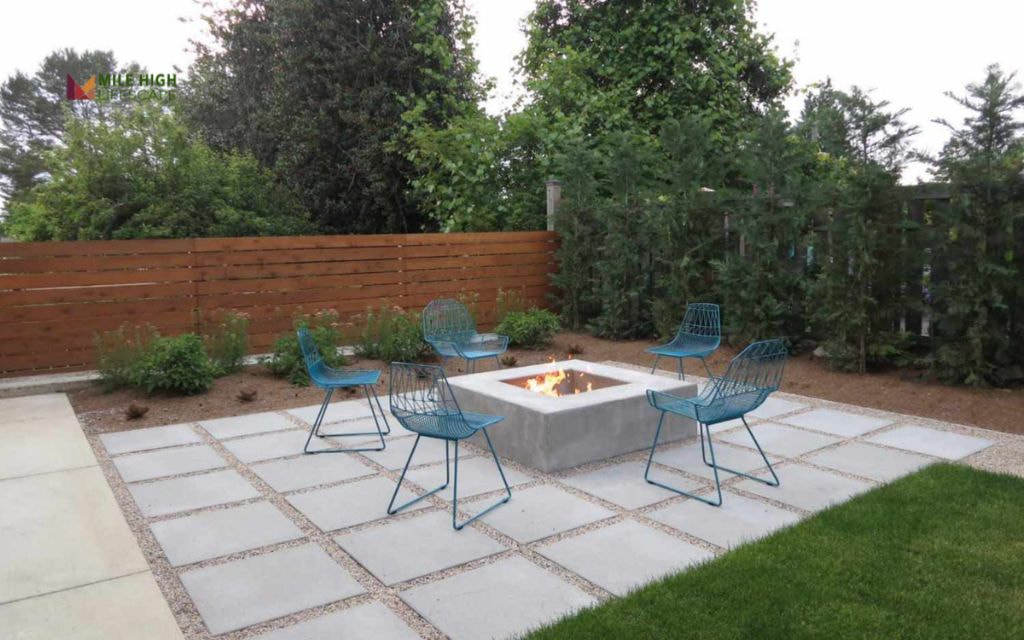
#17: Decorative Rock Mosaic or Pattern
Combine different colored rock types to form shapes, stripes, or artistic swirls. This creative approach allows personal expression while maintaining practical benefits. Colored stones can reflect specific themes or complement home architecture.
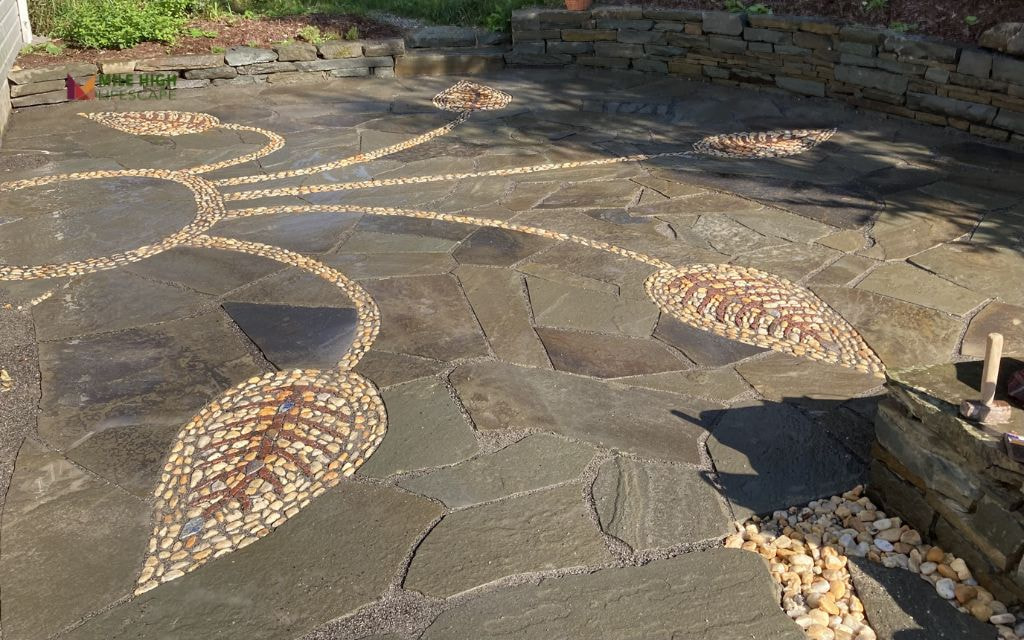
#18: Rock Firewood Storage Area
Frame woodpile areas with stacked river rock to create visual boundaries. This practical storage solution integrates functional needs with landscape design. The rock framework helps organize outdoor spaces while providing weather protection for stored materials.
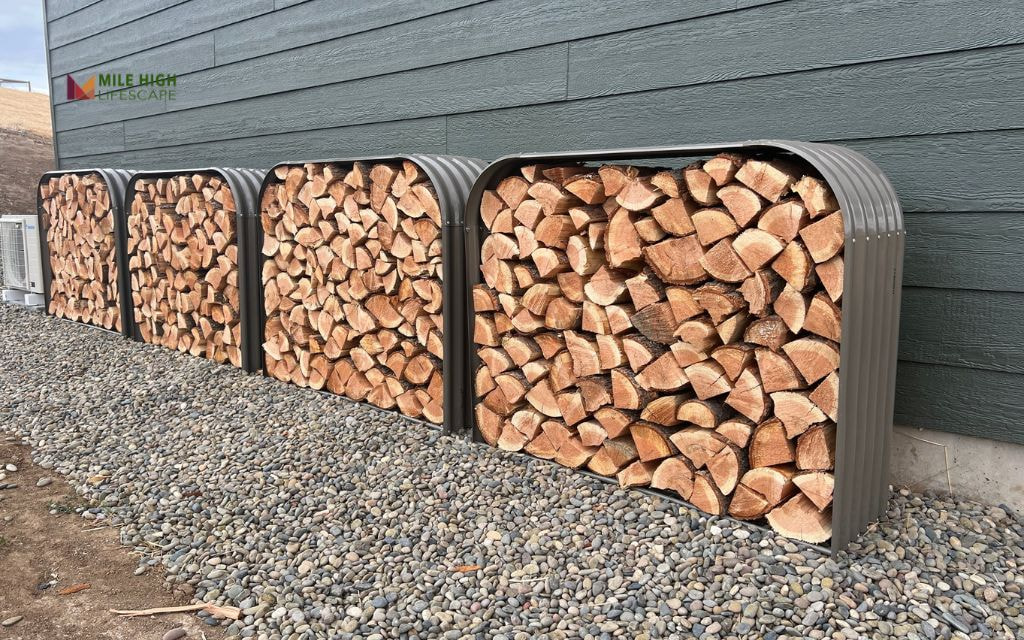
Benefits of Rock Landscaping in Denver Backyards
- Water Efficiency: Unlike traditional lawns requiring 1-2 inches of water weekly, rock gardens need no supplemental watering once established. This conservation approach helps homeowners comply with Denver’s water restrictions.
- Low Maintenance Requirements: Rock installations require no mowing, fertilizing, or seasonal cleanup. Unlike grass lawns demanding weekly attention, rock landscapes maintain their appearance with minimal intervention.
- Exceptional Durability: Colorado’s intense UV exposure, temperature extremes, and precipitation patterns challenge many landscape materials. Rock withstands these conditions without degradation, maintaining appearance and function through decades of weather exposure.
- Effective Weed Suppression: Quality landscape fabric beneath rock installations prevents weed establishment while allowing water infiltration. This system reduces herbicide use and manual weeding compared to traditional garden beds.
- Design Flexibility: Rock landscaping adapts to modern, rustic, or natural architectural styles seamlessly. The material ranges from smooth river rock to angular flagstone provides options for any aesthetic preference.
What Plants Pair Well with Rock Landscapes in Denver?
Native Colorado plants integrate naturally with rock landscaping while requiring minimal water and maintenance. These drought-tolerant species have evolved to thrive in our specific climate conditions.
- Blue grama grass provides soft texture contrast against hard rock surfaces while requiring no irrigation once established. This native bunch grass handles foot traffic well and maintains attractive seed heads through winter months.
- Blanket flowers (Gaillardia) offer bright orange and red blooms from spring through fall frost. The flowers complement earth-tone rocks while attracting beneficial pollinators to garden spaces. Self-seeding characteristics ensure natural garden renewal.
- Penstemon species deliver tubular flowers in purple, pink, or white throughout growing seasons. These native perennials adapt to various soil conditions while providing vertical elements among horizontal rock arrangements. Hummingbirds frequently visit these blooms.
- Yarrow varieties contribute feathery foliage and flat-topped flower clusters in white, yellow, or pink. The plants spread gradually to fill spaces between rocks while maintaining a neat appearance.
- Sedum collections offer succulent textures with seasonal color changes from green to red or purple. These low-growing plants soften rock edges while requiring virtually no maintenance. Many varieties produce attractive flowers that attract butterflies.
- Russian sage provides silvery foliage and spikes of lavender-blue flowers through late summer. The plant’s drought tolerance and deer resistance make it ideal for challenging sites. Aromatic foliage adds sensory appeal to garden spaces.
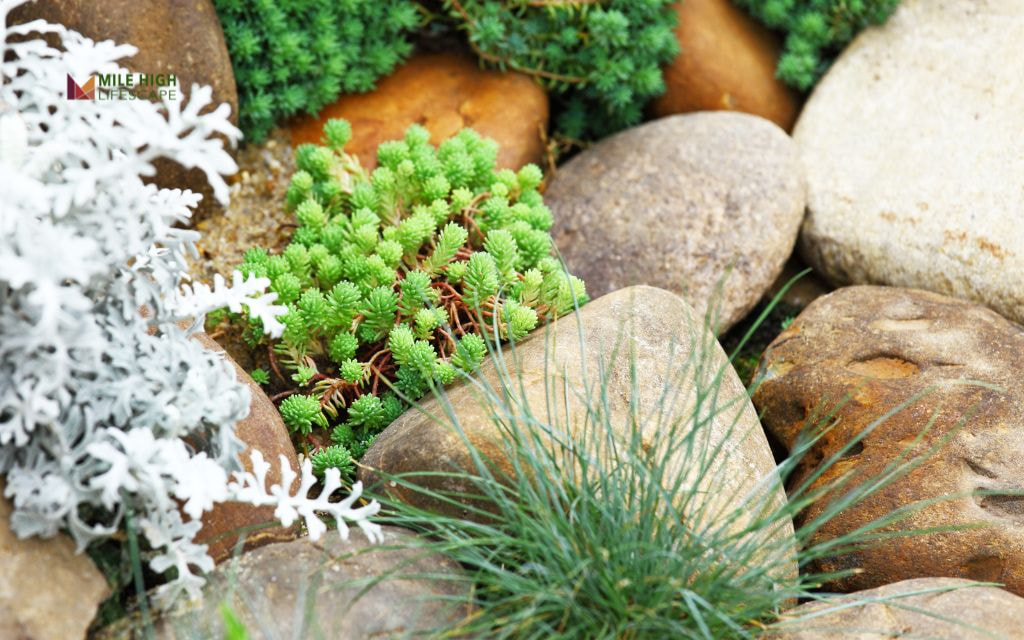
DIY Tips for Installing Backyard Rock Features in Colorado
- Site Preparation: Remove existing turf completely and grade slopes to ensure proper drainage. Install landscape fabric to prevent weed growth while allowing water infiltration. Edge boundaries with metal or plastic edging to contain rock materials and prevent spreading.
- Foundation Requirements: Create stable gravel bases for patios or heavily trafficked pathways. Use crushed limestone or granite fines compacted in 2-inch lifts for solid foundations.
- Border Installation: Install permanent edging materials to maintain clean boundaries between rock areas and adjacent landscapes. Metal edging provides durability while plastic options offer flexibility for curved designs.
- Tree and Root Protection: Avoid piling rocks directly against tree trunks or over root zones. Maintain 6-inch clearance from bark to prevent moisture retention and pest issues. Deep rock layers can suffocate tree roots and compromise plant health.
- Utility Safety: Call 811 Colorado before any digging to locate underground utilities. This free service prevents dangerous accidents and costly repairs. Mark utility locations clearly before beginning excavation work.
Understand better the process of installing landscape rocks in this article.
Conclusion
Rock landscaping delivers beauty, practicality, and sustainability for Denver homeowners. The combination of water conservation, minimal maintenance, and year-round appeal makes these installations ideal for Colorado’s challenging climate conditions.
Experiment with different rock types, plant combinations, and layout styles to develop designs that match your lifestyle needs. Start with small projects to gain experience before attempting larger installations.
If you’re looking for reliable rock landscapers near me, Mile High Lifescape has been proudly serving the Denver Metro area as the go-to landscape company. With a reputation for excellence, we offer a comprehensive range of friendly and professional landscaping services.
Count on us to transform your outdoor space into a beautiful oasis!
Frequently Asked Questions (FAQs)
Do backyard rocks increase heat in summer?
Darker rocks absorb and radiate heat more than lighter colors, especially during Denver’s intense summer sun. Choose light-colored stones like sandstone or limestone for cooler surfaces. Mix rocks with plants or mulch to balance temperature effects in seating areas.
Can I use landscaping rocks in shaded backyards?
Rock landscaping works well in shade but requires different considerations. Avoid moss-prone areas with poor air circulation and choose rocks that resist discoloration from moisture. River rock and flagstone perform better than porous stone types in humid shade conditions.
What’s the cheapest backyard rock option for large spaces?
Pea gravel and decomposed granite typically cost less per cubic yard than larger stones. These materials provide good coverage while maintaining an attractive appearance. Local quarries often offer better pricing than retail suppliers for bulk quantities.
